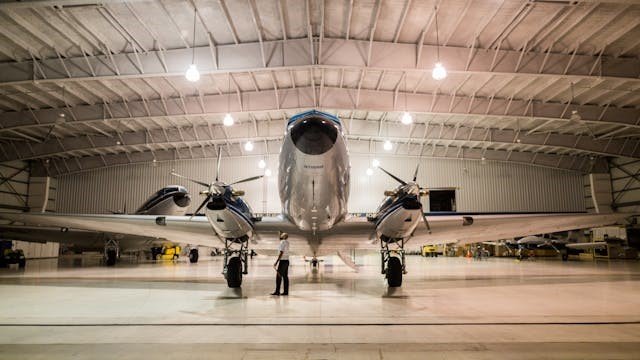Behind the Terminal: A Look at Airport Operations
Every time you pass through an airport, you are merely seeing the surface of a complex operating ecology. Like small cities, airports employ thousands of people working across several systems to guarantee your trip goes safely and without incident. From the time your bags vanish on the conveyor belt until your aircraft takes off, many specialist staff are working in unison to preserve the delicate choreography, keeping air travel running smoothly.
Air Traffic Management
The air traffic control tower at any airport is its nerve center. Here, managers talk to pilots all the time to make sure takeoffs and landings are safe and to keep an eye on complicated radar systems. These professionals tell planes which routes to use, keep exact distances between them, and act quickly when the weather changes. Their duties also include controlling ground movement, thereby guaranteeing aircraft taxi between terminals and runways without incident. With controllers often managing hundreds of aircraft concurrently within tightly planned time slots while maintaining stringent safety procedures and properly communicating with flight crew members working in different situations, the margin for mistakes is small.
Baggage Handling Systems
Your luggage’s trip incorporates significantly more technology than you would have ever guessed. Modern baggage handling systems transport every component to its proper destination using sophisticated conveyor networks, barcode scanners, and RFID technologies. Your bag fades from view and then finds its way onto a network of fast conveyors spanning kilometers under the terminal. Reading the luggage tags, automated sorting systems guide every item via a set of decision points toward the proper loading area. Often, with limited constraints that need exact timing and airport ground transportation management to prevent system delays, ground handling services must cooperate painstakingly to ensure luggage transfers between connected planes.
Security Operations
Airport security is a system comprising several levels of protection cooperating. Teams continuously monitor behind the scenes and do threat assessments outside the obvious security checkpoints where your boarding pass is presented. This covers employee screening procedures, perimeter security, and monitoring of every operational area. As part of a complete security plan, advanced imaging technologies, explosive detection systems, and behavioral analysis cooperate. Federal agencies, airport authorities, and airlines working together produce an integrated method whereby data is exchanged across platforms. Security staff receive thorough training to spot possible hazards while keeping effective passenger flow, so balancing vigilance with the pragmatic requirements of a major transit hub.
Terminal Management
The passenger terminal itself calls for much more operational support. To maintain seamless operations, airport equipment like baggage handling systems, security scanners, and boarding bridges needs constant inspection and maintenance by facilities personnel. This upkeep covers jet bridges, information displays, HVAC systems, and restrooms, among other aspects of airport architecture. Retail and food service providers have to plan personnel and delivery around flight times to satisfy consumer needs. Customer support agents help with navigating, special accommodations, and handling travel problems as they develop. Operations staff behind every gate plan for arriving and leaving flights, working with ground crews and flight attendants. The terminal has to run effectively despite often changing circumstances like weather delays, peak travel times, and sporadic disruptions needing quick response and clear departmental communication.
Aircraft Turnaround
An aircraft’s arrival to subsequent departure spans a precisely timed series of events. To keep schedule integrity, cleaning crews, catering services, fueling teams, and maintenance technicians must finish their jobs within tight time frames. Agents on-ramp control make sure all service trucks approach the airplane in the right order. While maintenance staff do safety inspections, baggage handlers empty and load cargo holds. With several teams working concurrently, this coordinated approach looks like a pit stop in racing. The profitability and schedule dependability of an airline directly depends on the effectiveness of aircraft turnaround, so these behind-the-scenes activities are vital for the whole airport system.
Conclusion
Think about the hidden infrastructure and planned collaboration the next time you pass an airport to enable your trip. Behind every flight is a small army of experts with knowledge in several technical and service areas. Their combined efforts guarantee the sophisticated equipment of air travel keeps running day and night under all weather and passenger loads. Combining current technology with human knowledge to preserve the worldwide air travel network linking our planet, the modern airport reflects one of the most advanced operational environments in transportation.






